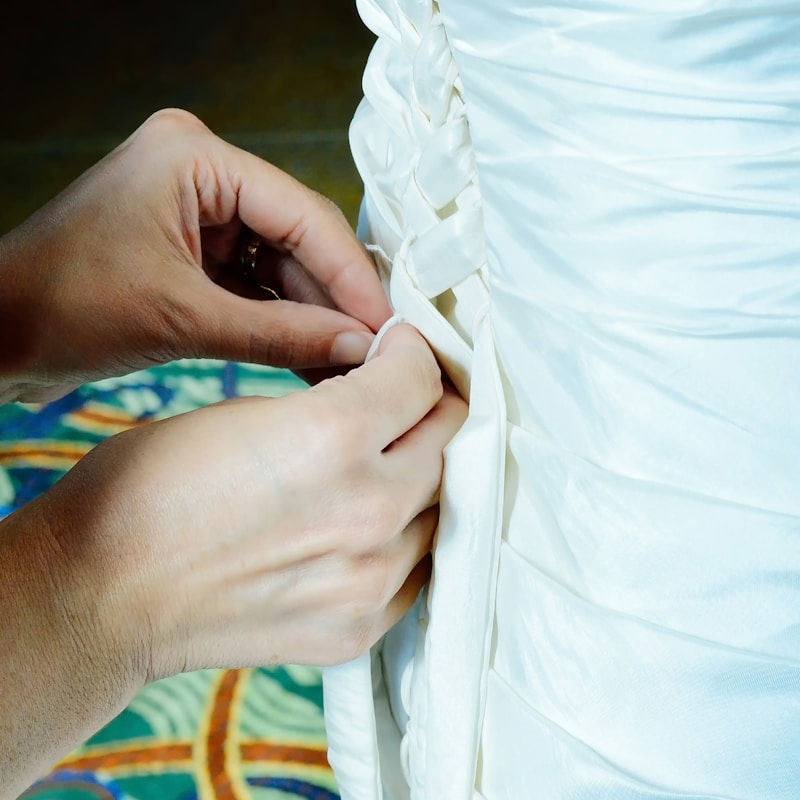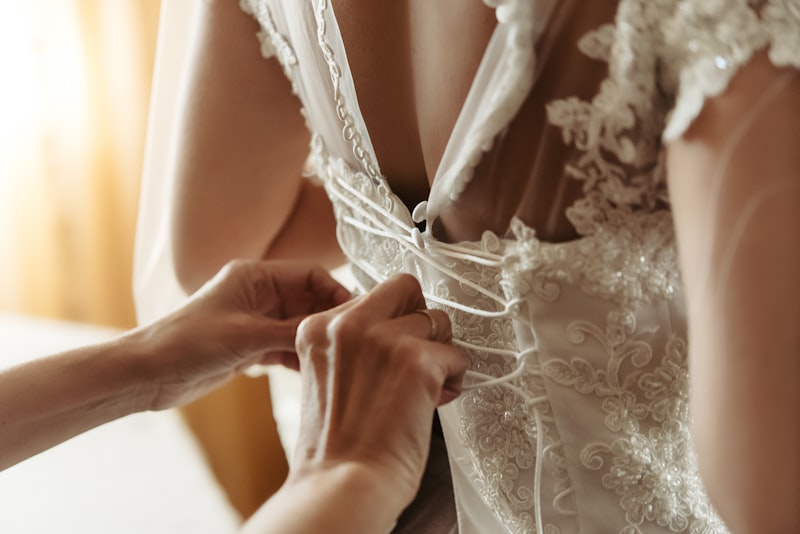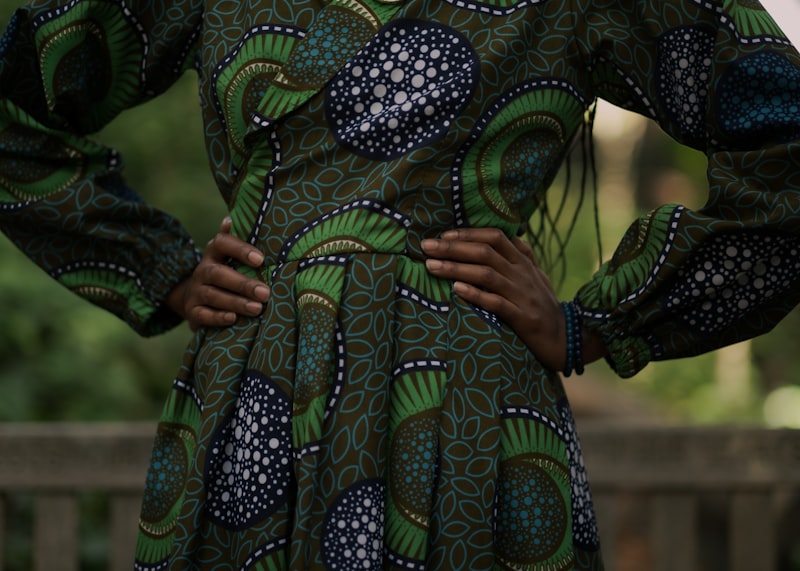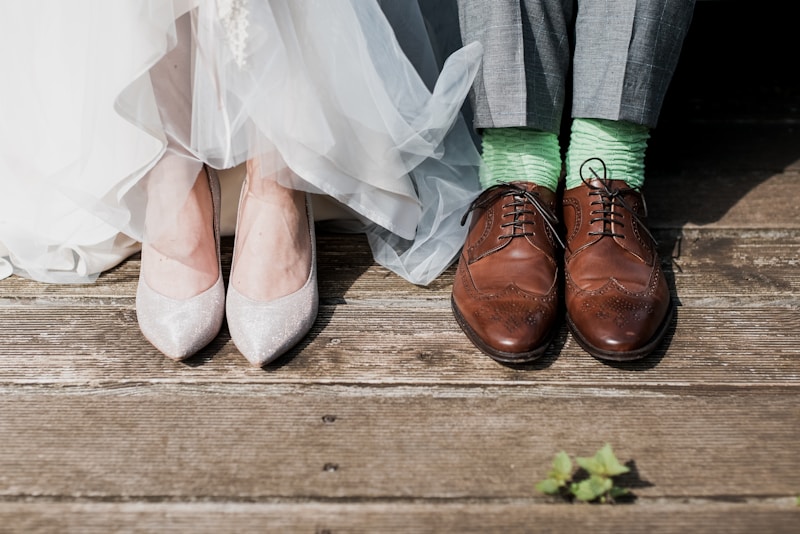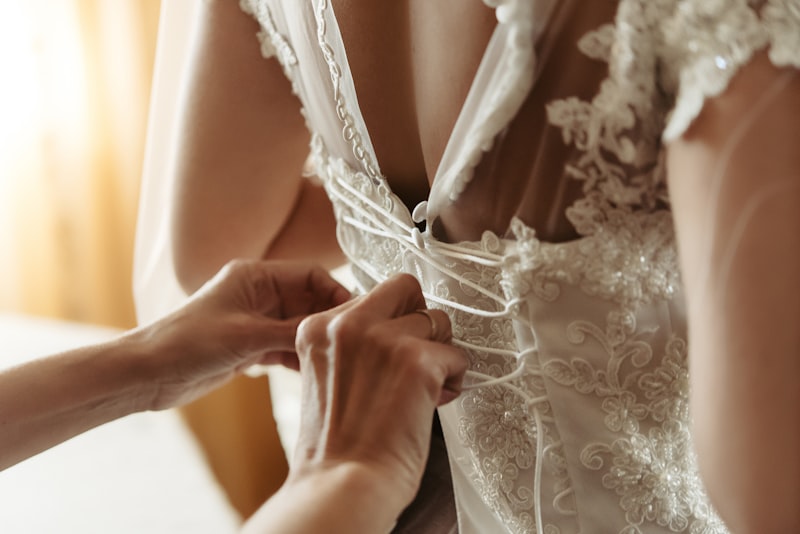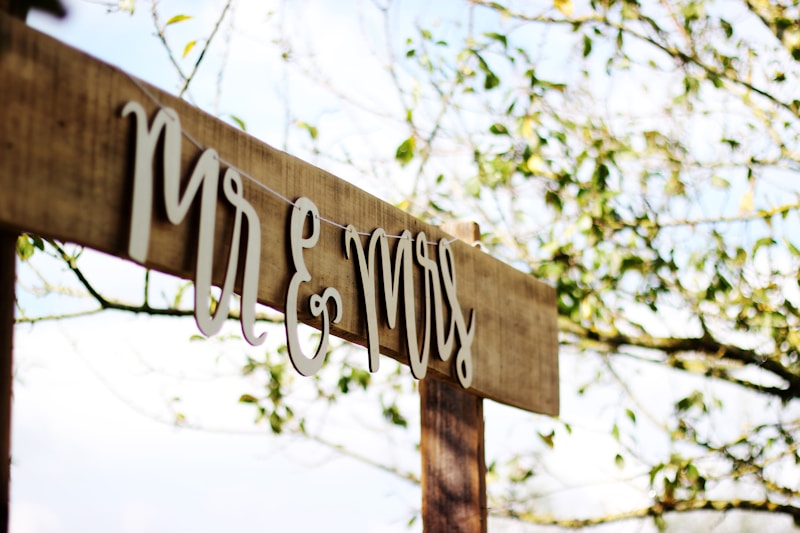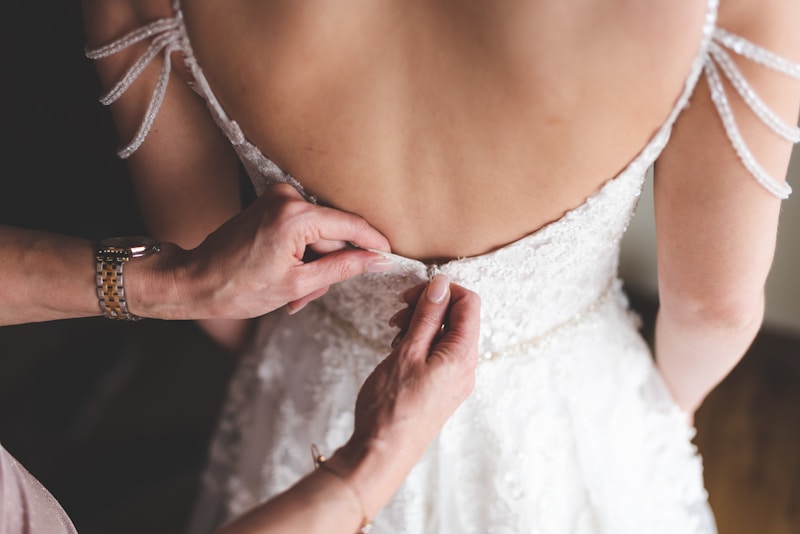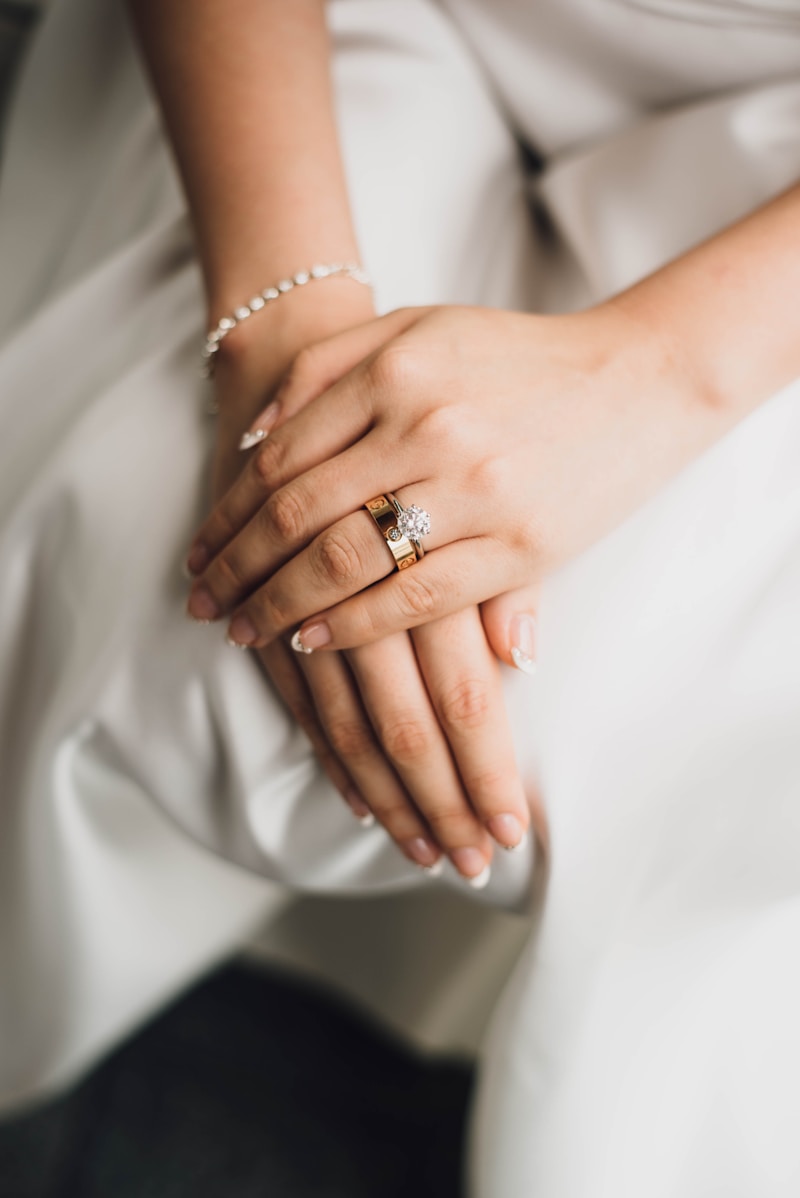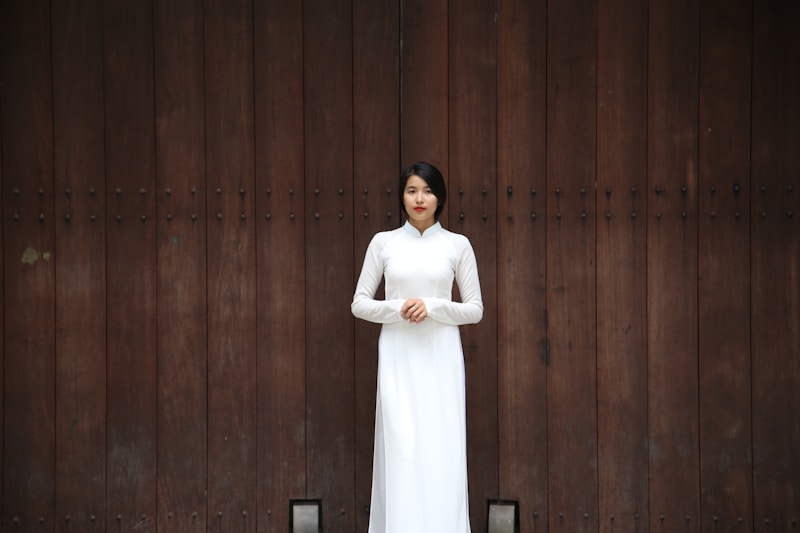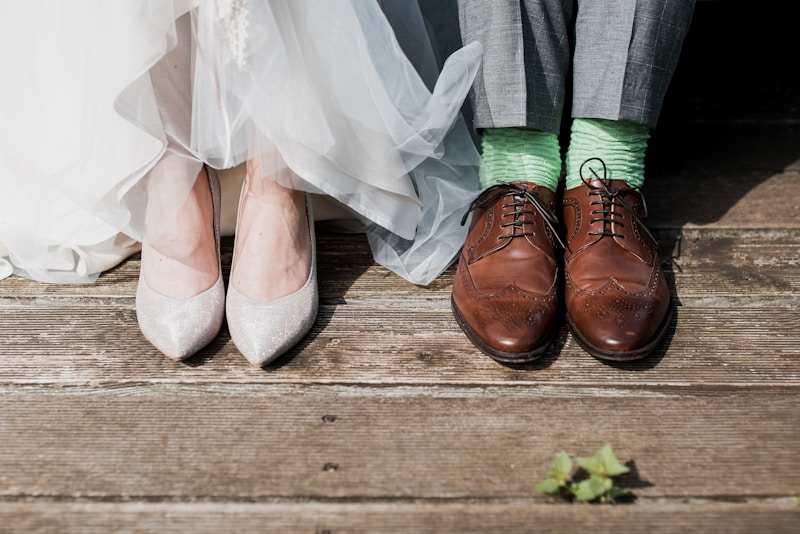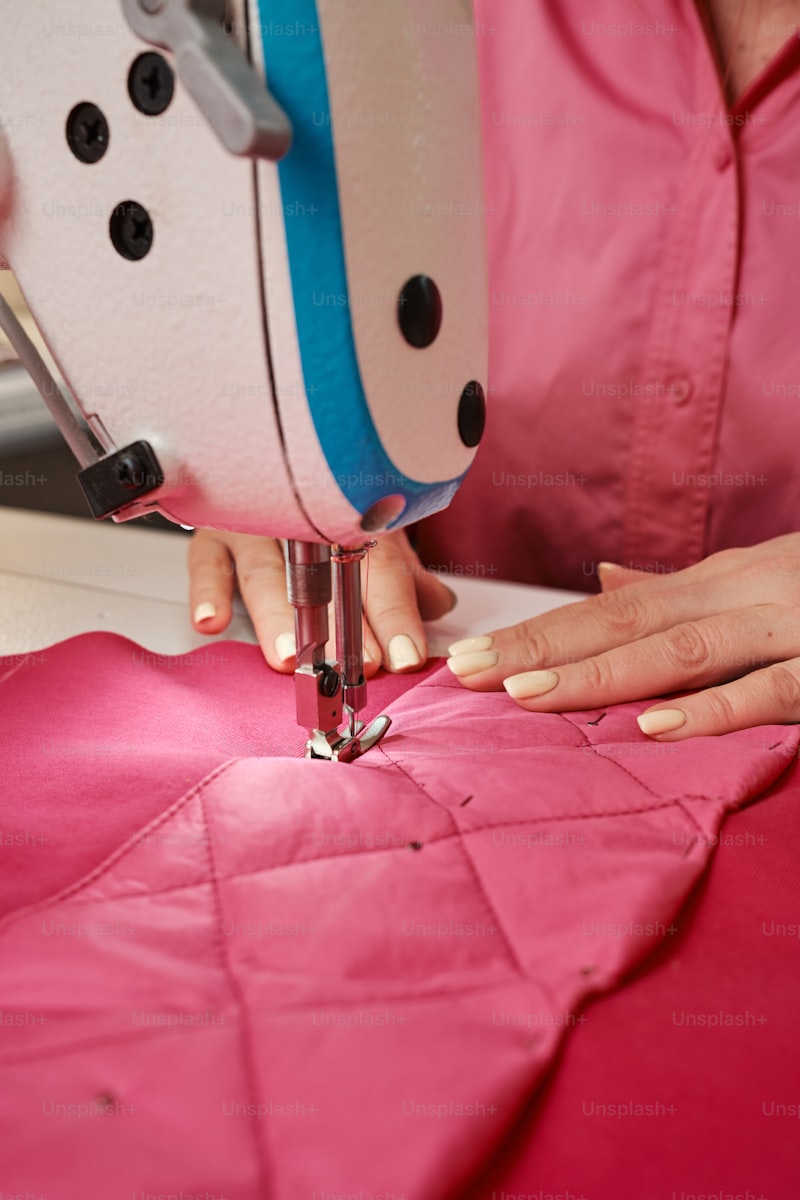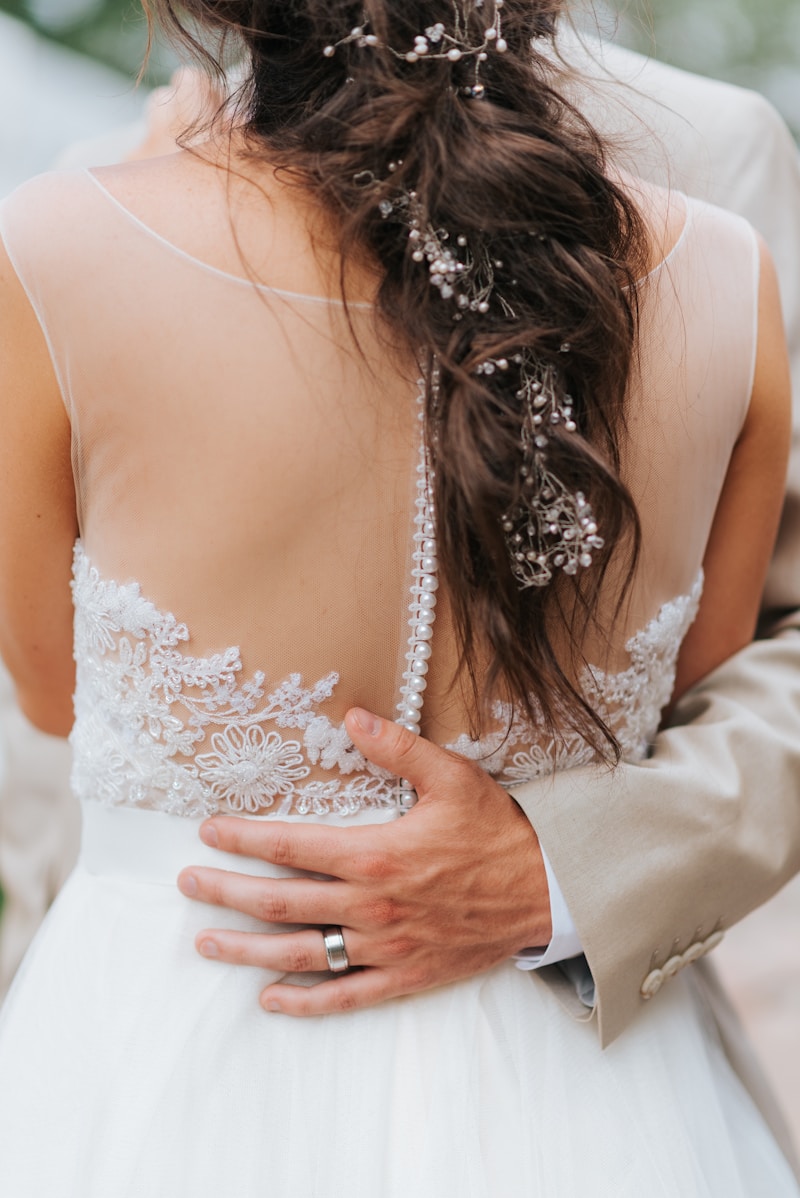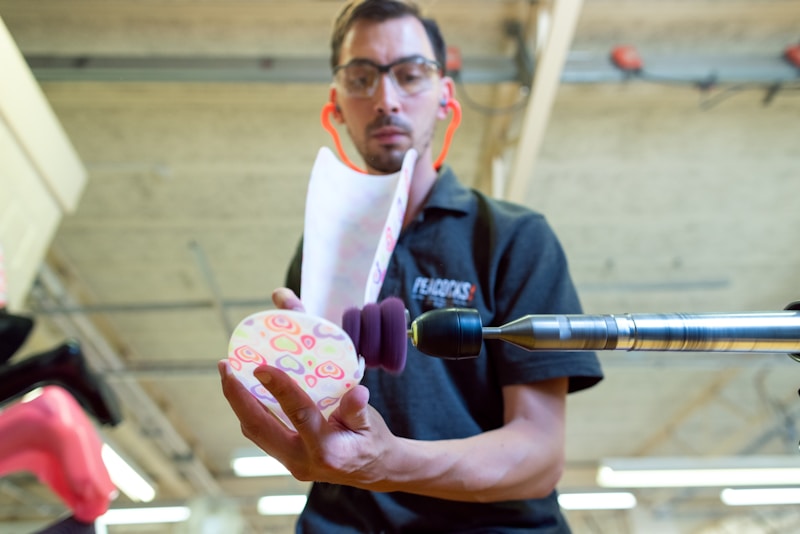Ultimate Guide to Tailoring Services for Bridal Attire: Ensure Your Dream Wedding Dress Fits Perfectly
Choosing the perfect bridal attire is a significant part of every bride's journey. However, even the most stunning wedding dress may require some adjustments to ensure a flawless fit. This is where tailoring services for bridal attire come into play. In this guide, we will explore everything you need to know about tailoring services, why they are essential, and how to choose the best options for your dream dress.What are Tailoring Services for Bridal Attire?Tailoring services for bridal attire involve customizing and adjusting wedding dresses to achieve the perfect fit and look. These services can enhance the garment's design, create a unique fitting style, and ensure the wedding dress complements the bride's body shape. Tailors specialize in both alterations and bespoke creations, providing a wide range of options to brides-to-be.Types of Tailoring Services Service Type Description Alterations Adjusting size, length, or style of an existing bridal dress. Customizations Adding unique features such as lace overlays, beading, or new sleeves. Bespoke Design Creating a completely new dress tailored to the bride’s specifications. Dress Preservation Cleaning and preserving the wedding attire post-event. Why Are Tailoring Services Important?Having your bridal attire tailored is crucial for several reasons: Perfect Fit: A dress that fits well enhances your confidence and overall appearance. Comfort: Ensure you can move freely and com...
The Importance of Wedding Gown Alterations: Ensuring the Perfect Fit for Your Big Day
Every bride dreams of looking stunning on her wedding day, and one of the key elements that contribute to this vision is the wedding gown. However, what many brides often overlook is the importance of wedding gown alterations. A gown that is not altered to fit perfectly can detract from the overall elegance of a bride's appearance, leading to discomfort and dissatisfaction. In this article, we will explore the significance of wedding gown alterations, the process involved, common issues faced, and tips for ensuring the best results.Why Are Wedding Gown Alterations Important?Wedding gown alterations are crucial for several reasons: Perfect Fit: Every bride has a unique body shape, and wedding gowns are usually designed for a standard fit. Alterations ensure that the dress hugs the body in all the right places, enhancing your silhouette. Comfort: A well-fitted gown allows for easier movement, making it more comfortable to wear throughout the day, especially during activities like dancing or sitting. Style Adjustment: Modifying the gown can help achieve your desired style, whether it be changing the neckline, adjusting the length, or adding unique embellishments. Correcting Manufacturing Flaws: Even high-end gowns can come with issues such as uneven seams or misplaced embellishments, necessitating alterations to ensure a polished look.Common Alterations Brides ConsiderHere are some of the most common alterations brides may need to consider for their wedding gowns: Alter...
The Role of Alterations in Bridal Fashion
When it comes to wedding planning, one of the most significant elements is the bridal gown. For many brides, finding the perfect dress is a dream come true. However, it's not just about choosing the right design; the essential role of alterations in bridal fashion cannot be overlooked. In this article, we will delve deep into the importance of alterations, how they can transform a bridal gown, and key considerations for brides-to-be.Understanding Bridal AlterationsBridal alterations refer to the necessary adjustments made to a wedding dress to ensure a perfect fit. These alterations can involve simple adjustments like hemming and taking in seams, to more complex modifications such as adding sleeves, changing necklines, or adjusting corset structures. The goal is to create a tailored look that enhances the bride's figure and complements her style.Why Alterations MatterMany brides may not realize the impact of proper alterations until they try on their gown after the modifications. Here are several reasons why alterations are crucial:Enhances FitBridal gowns come in standard sizes, but every woman’s body is unique. Alterations ensure the dress hugs the right curves and falls perfectly.Improves ComfortA well-fitted dress allows for ease of movement, letting brides dance and enjoy their special day without any discomfort.Accentuates FeaturesAlterations can highlight a bride's features, whether it's emphasizing an hourglass silhouette or elongating the legs with a perfect hem.Pers...
Understanding Dress Construction for Better Alterations
When it comes to fashion, the art of dressmaking transcends mere aesthetics; it's about understanding how garments are constructed. For individuals looking to improve their tailoring skills or seeking better alterations, a solid grasp of dress construction is essential. This guide aims to shine a light on the intricate world of dress construction and provide practical insights for achieving those flawless fittings.What is Dress Construction?Dress construction refers to the process of designing and sewing together the various components of a dress to create a cohesive and functional garment. This involves understanding the use of patterns, fabrics, and techniques that contribute to the overall fit and style of the dress. The more you understand these elements, the better equipped you will be for making alterations. Here are some key components:ComponentDescriptionImportance in AlterationsPatternsBlueprints of the dress design that dictate shape and fit.Knowing how to modify patterns is crucial for adjustments.FabricsThe material used for the dress, affecting drape and comfort.Understanding fabric properties helps in selecting appropriate alterations.SeamsThe lines where two pieces of fabric are sewn together.Altering seams can significantly change the fit.HemsThe bottom edge of the dress that is often folded and stitched.Hemming techniques dictate the final look of the garment.Key Concepts in Dress ConstructionTo delve deeper into dress construction, let's explore some fundame...
Wedding Dress Rescue: Last-Minute Alterations to Save Your Big Day
When the big day arrives, every bride dreams of looking perfect in her wedding dress. However, unforeseen circumstances can lead to last-minute adjustments that may require immediate attention. This is where wedding dress rescue comes into play. In this article, we will explore essential last-minute alterations, tips for a smooth wedding morning, and how to ensure your gown fits like a glove on the big day.Understanding the Need for Last-Minute AlterationsMany brides find themselves needing last-minute alterations for various reasons. Whether it’s due to fluctuations in weight or last-minute fittings, it’s crucial to understand how to handle these changes effectively. Here are some common scenarios that might require alterations:ScenarioPossible SolutionWeight FluctuationTaking in the dress at the waist or bustLength IssuesHemming the dress to the right lengthMisalignmentAdjusting seams to ensure proper fitIt’s crucial for brides to be proactive about potential issues. Remember that the time before the wedding can be hectic, and acknowledging that alterations may be necessary can save you from last-minute panic.Finding a Skilled SeamstressWhen you realize you need wedding dress rescue provisions, finding a skilled seamstress quickly becomes a priority. Here are some tips to consider when searching for someone to help:Ask for Recommendations: Reach out to friends or family who have recently been married.Check Reviews: Look for online reviews to gauge the quality of work.Visit ...
Essential Guide to Size Adjustments for Wedding Dresses: Ensure the Perfect Fit on Your Special Day
When it comes to choosing the perfect wedding dress, one of the most critical aspects to consider is the fit. Size adjustments for wedding dresses can make all the difference, transforming an already beautiful gown into a masterpiece that complements your body. In this article, we will explore the importance of size adjustments, the services available, and tips to ensure that your dress fits like a glove on your wedding day.Understanding Size Adjustments for Wedding DressesSize adjustments refer to modifications made to a dress to achieve a better fit. This process can include taking in or letting out seams, shortening or lengthening the dress, and adjusting strap lengths. When a wedding dress is too loose or too tight, it can detract from your overall appearance and comfort. Hence, proper sizing is crucial for a confident and stunning look on your special day.Types of Size AdjustmentsAdjustment TypeDescriptionTaking InReducing the dress size by altering seams to create a tighter fit.Letting OutIncreasing the size by unpicking seams, allowing for added fabric.Hem AdjustmentShortening or lengthening the skirt to ensure it grazes the floor perfectly.Strap AdjustmentAltering the length of straps for comfort and style.Train AdjustmentsModifying the length of the train for easier movement and elegance.Different dresses require different size adjustments. Understanding these types can help you communicate effectively with your tailor or seamstress. can also be an essential keyword...
The Impact of Alterations on Wedding Dress Fit: A Comprehensive Guide
Choosing the perfect wedding dress is one of the most important decisions for any bride-to-be. However, once you find "the one," alterations become essential to ensure that your dress fits perfectly. In this article, we’ll explore the impact of alterations on wedding dress fit, covering essential aspects such as common alterations, the timeline for alterations, costs, and tips for ensuring a flawless fit on your big day.Understanding Wedding Dress AlterationsAlterations are modifications made to the dress to enhance fit, comfort, and appearance. Even the most beautifully designed dresses often require some degree of alteration due to the varying body shapes and sizes of brides. It is crucial to understand the roles alterations play in achieving that dream fit, especially considering the emotional and financial investment involved in securing the perfect dress.Common Types of AlterationsType of AlterationDescriptionHem Length AdjustmentThe process of altering the length of the dress, ensuring it suits the bride's height and chosen footwear.Waist AdjustmentTaking in or letting out the dress at the waist to achieve a snug fit or added comfort.Cup InsertionsAdding padding or cups for support and shape, particularly for strapless dresses.Strap AdjustmentsModifying the length or style of straps to provide suitable support and visual appeal.Training ModificationsAdjusting the train length and style to align with the bride's vision and comfort.These alterations can significantly infl...
Common Wedding Dress Alterations and Adjustments: A Comprehensive Guide
Planning a wedding is an exciting yet challenging endeavor, with countless details demanding your attention. Among these, choosing the perfect wedding dress is one of the most significant aspects. However, it's essential to recognize that a wedding dress often requires alterations to ensure it fits perfectly. In this article, we will explore common wedding dress alterations and adjustments, providing insights into the processes and costs involved.Understanding Wedding Dress AlterationsWedding dress alterations are modifications made to a gown to achieve the ideal fit tailored to your body shape. While many dresses are designed to accommodate diverse sizes, they usually need adjustments to ensure you feel comfortable and confident on your special day. Here are some common reasons for alterations: Size adjustment: Dresses may be too large or too small. Length modification: Hemming is often necessary, especially for floor-length gowns. Style changes: Adding or removing sleeves, altering necklines, or changing the silhouette. Comfort and support: Adding underwire, bust cups, or other supportive modifications.Common Alterations ExplainedBelow are detailed descriptions of the most common wedding dress alterations and adjustments:Alteration TypeDescriptionAverage Cost (USD)HemmingShortening or lengthening the dress.$100 - $300Taking InAdjusting the sides for a tighter fit.$50 - $150Letting OutMaking the dress larger if needed.$50 - $150Adding SleevesIncorporating straps ...
Essential Seamstress Tips for Bridal Gown Alterations
The journey to the perfect wedding dress is filled with excitement and anticipation. For many brides, finding that perfect gown involves not just selecting a beautiful design, but also ensuring that it fits impeccably. Bridal gown alterations are a crucial part of this process, and having a skilled seamstress is vital. In this article, we will provide essential seamstress tips for bridal gown alterations, helping brides understand what to expect and how to prepare for their fittings. Understanding Bridal Gown Alterations Bridal gown alterations can transform a gown from beautiful to breathtaking. Whether it’s adjusting the hem, modifying the neckline, or taking in the waist, these adjustments are essential for achieving the perfect fit and enhancing the overall look of the gown. When to Start Alterations It's advisable to start alterations as soon as you have your wedding dress, preferably 2-3 months before the wedding date. This timeframe allows sufficient time for multiple fittings and adjustments. Initial Considerations Before heading to your seamstress, consider the following: Know your budget for alterations. Choose a seamstress who specializes in bridal gowns. Bring the right undergarments and accessories. Key Tips for Brides Here are some important seamstress tips for bridal gown alterations: TipDescription Be HonestShare your concerns and desired adjustments with your seamstress. CommunicateDiscuss your vision clearly to ensure alignment. Under...
Ultimate Timeline for Wedding Dress Alterations: Your Complete Guide
Planning a wedding is a whirlwind of emotions and tasks, and one of the most crucial elements is finding the perfect wedding dress. Once you’ve selected your dream gown, alterations become the next priority. Understanding the timeline for wedding dress alterations is essential to ensuring you feel your best on your big day. This article will delve into the necessary steps, the ideal timeline, and tips to guarantee a smooth alteration process.Why Alterations MatterEven the most beautiful wedding dress may not fit perfectly right off the rack. Each body is unique, and alterations help to enhance your silhouette, creating the perfect fit. The right alterations can transform your dress into a flattering, comfortable garment that complements your figure and brings your entire look together.Key Factors to Consider Before AlterationsFactorImportanceDress TypeDifferent styles may require different types of alterationsDesignerDesigner-specific fitting issues can arise, impacting the alteration processInitial FitA better initial fit can reduce alteration timeTimeframeA longer timeframe allows for more adjustments if necessaryBudgetUnderstanding costs upfront can aid in planningYour Wedding Dress Alteration TimelineTo assist in navigating the alteration process, here’s a detailed timeline to follow:Three to Six Months Before the WeddingBegin your journey by scheduling your first fitting. At this stage, you can identify any major adjustments needed. Discuss these with your seamstress and...
Understanding Alteration Costs for Wedding Dresses: A Comprehensive Guide
When it comes to planning a wedding, every detail matters, and the wedding dress is no exception. However, many brides often overlook the costs associated with alterations. In this article, we will delve into alteration costs for wedding dresses, helping brides-to-be understand what to expect, how to budget, and tips for minimizing these expenses.The Importance of Wedding Dress AlterationsPurchasing a wedding dress is a significant investment, and ensuring it fits perfectly is crucial for your comfort and confidence on your big day. While the average cost of a wedding dress can range from $1,000 to $3,000, alterations can add an additional $200 to $800, depending on the complexity of the modifications needed. Understanding alteration costs can help brides budget accordingly and avoid surprises.Common Alterations and Their CostsWedding dress alterations can vary widely based on several factors, including the style of the dress, the amount of work needed, and the location of the tailor. Below is a table summarizing common alterations and their average costs:Type of AlterationAverage CostHem shortening$50 - $150Waist adjustment$50 - $100Strap adjustments$20 - $50Adding or removing sleeves$75 - $200Taking in bodice$50 - $150Adding a bustle$50 - $100Custom alterations (e.g., beadwork)$100 - $300+Bear in mind that these figures can fluctuate depending on your region, the tailor's expertise, and the dress's fabric.Factors Influencing Alteration CostsSeveral factors impact the overal...
Understanding Ethical Considerations in Dress Alterations: A Comprehensive Guide
Introduction to Ethical Considerations in Dress AlterationsDress alterations are common in the fashion industry, allowing individuals to tailor garments to their specific needs. However, ethical considerations play a crucial role in this process. This article explores various ethical dimensions related to dress alterations, focusing on labor practices, sustainability, and cultural sensitivity. As consumers become more conscious of their choices, understanding these aspects ensures that dress alterations are performed responsibly and ethically.The Importance of Ethical Dress AlterationsIn an era where consumers are increasingly aware of the impact of their fashion choices, it’s essential to consider the ethical implications of dress alterations. Ethical considerations can influence purchasing decisions and the overall perception of the fashion industry. Here are some reasons why ethical dress alterations matter:Labor Rights: Ensuring that dress alterations are carried out by skilled workers who are fairly compensated is fundamental.Sustainability: Eco-friendly practices in dress alterations help to reduce waste and promote environmental consciousness.Cultural Sensitivity: Respecting different cultural backgrounds and their influence on fashion can prevent cultural appropriation.Labor Rights in Dress AlterationsWhen it comes to dress alterations, labor rights are at the forefront of ethical issues. Many garments are altered in countries where labor laws may not be strictly enfo...
Key Factors Affecting Wedding Dress Alterations: A Comprehensive Guide
Understanding the Factors Affecting Wedding Dress AlterationsWhen it comes to planning a wedding, the dress plays a pivotal role in creating the perfect ambiance and ensuring every bride feels like royalty on her special day. However, selecting the ideal wedding dress often necessitates alterations to achieve that flawless fit. In this article, we will explore the various factors affecting wedding dress alterations, and provide insights to help brides navigate this crucial aspect of wedding preparation. By understanding these factors, brides can ensure their wedding dress alterations are completed efficiently and expertly, fostering an overall positive bridal experience.The Importance of Wedding Dress AlterationsWedding dress alterations can transform a gown from off-the-rack to a tailor-made masterpiece. While some brides may find a dress that fits them perfectly, most will require at least a few adjustments to achieve their ideal look. The importance of these alterations cannot be overstated; they ensure that the dress complements the bride’s body shape, enhances her beauty, and allows her to move comfortably throughout the day. But what specifically influences the alteration process? Let’s delve into the key factors.1. Body Shape and MeasurementsThe most significant factor affecting wedding dress alterations is undoubtedly the bride’s body shape and measurements. Every bride has unique curves, and a tailor needs to consider these dimensions carefully to create a perfect fi...
Understanding Fabric Limits in Alterations: A Comprehensive Guide
Introduction to Fabric Limits in AlterationsIn the world of tailoring and clothing alterations, understanding the intricacies of fabrics and their limitations is crucial. Whether you're a professional tailor, a fashion enthusiast, or just someone who wants to make the most out of your garments, knowing how to work with different fabrics can make a significant difference. This article will explore the various aspects of fabric limits in alterations, including the types of fabrics, common alterations, the impact of fabric types on alterations, and practical guidelines for successful adjustments.Types of Fabrics and Their CharacteristicsFabrics can be broadly categorized into three main types: natural, synthetic, and blended fabrics. Each type has distinct characteristics that affect how they can be altered. Here’s a brief overview:Fabric TypeCharacteristicsAlteration LimitationsNatural Fibers (Cotton, Wool, Silk)Breathable, comfortable, biodegradableMay shrink or stretch; requires careful handlingSynthetic Fibers (Polyester, Nylon, Spandex)Durable, resistant to wrinkles, easy to care forCan be difficult to sew; melting point can limit alteration optionsBlended Fabrics (Cotton-Polyester, Wool-Acrylic)Combines characteristics of both fibersVaries depending on the dominant fiber; may still have limitationsCommon Alterations and Their Feasibility Based on FabricDifferent types of alterations can be performed on garments. However, not all alterations are suitable for every fabric. H...
Mastering Dress Fitting Techniques: A Comprehensive Guide for Fashion Enthusiasts
When it comes to creating the perfect garment, mastering dress fitting techniques is essential for anyone in the fashion industry or for those who simply wish to create their own clothing. Whether you are a novice designer or an experienced tailor, understanding how to achieve the best fit for your dresses can greatly enhance your sewing skills. In this article, we will explore various dress fitting techniques, tips for perfection, and common fitting problems along with their solutions.Understanding Dress Fitting TechniquesDress fitting techniques refer to the various methods and practices applied to ensure that a dress fits an individual’s body shape perfectly. A well-fitted dress not only enhances the wearer’s silhouette but also boosts their confidence. Here, we break down the essential techniques:1. Taking Accurate MeasurementsAccurate measurements are the foundation of successful dress fitting. Here are the key measurements you need to take:MeasurementDescriptionBustMeasure around the fullest part of the bust.WaistMeasure around the narrowest part of the waist.HipMeasure around the fullest part of the hips.Sleeve LengthMeasure from the shoulder seam to the wrist.Length from Shoulder to HemMeasure from the shoulder seam down to the desired hemline.For the best results, it’s recommended to take these measurements while wearing a fitted undergarment. This will provide a clear view of your body's true shape.2. Understanding Fabric PropertiesThe type of fabric you choose can ...
The Ultimate Guide to Custom Tailoring for Brides: Creating Your Dream Wedding Attire
Getting married is one of the most significant events in a woman's life, and choosing the perfect wedding dress is paramount. While many brides opt for off-the-rack dresses, a growing trend is custom tailoring for brides. This personalized approach offers brides a unique opportunity to create a one-of-a-kind gown that mirrors their individual style and personality. In this comprehensive guide, we will delve into the process of custom bridal tailoring, the benefits it offers, and tips to help you achieve your dream wedding attire.Why Choose Custom Tailoring for Your Wedding Dress?When it comes to wedding dresses, finding the right fit and style can be challenging. Here are several compelling reasons to consider custom tailoring for your bridal gown:BenefitDescriptionPerfect FitCustom dresses are made to measure, ensuring a flawless fit that enhances your silhouette.Unique DesignYou have the freedom to collaborate with designers to create a gown that reflects your vision.Quality MaterialsCustom tailoring allows you to select high-quality fabrics and embellishments, ensuring your dress meets the highest standards.Personal TouchAdd personal details, such as custom embroidery or lace that holds sentimental value.Great InvestmentA well-tailored dress can be a sustainable choice, as it can be preserved and cherished for years to come.The Custom Tailoring ProcessThe custom tailoring process typically involves several key steps, each designed to ensure that the final product aligns wi...
The Ultimate Guide to Bridal Gown Adjustments: Everything You Need to Know
Introduction to Bridal Gown AdjustmentsChoosing the perfect bridal gown is just the beginning of your wedding preparations. Once you've found "the one," the next step is ensuring that it fits you flawlessly. Bridal gown adjustments are crucial for achieving a perfect look on your special day. This guide will delve deep into what these adjustments entail, why they're necessary, and how you can prepare for them.What Are Bridal Gown Adjustments?Bridal gown adjustments refer to the alterations made to a wedding dress after purchase to ensure the ideal fit for the bride. These adjustments can range from simple hem alterations to more complex modifications involving sleeves, bodices, and even bustles. The goal is to enhance the dress’s appearance on your body, allowing you to feel comfortable and confident as you walk down the aisle.Common Types of Bridal Gown AdjustmentsUnderstanding the different types of adjustments can help you communicate effectively with your tailor. Here are some common types:Adjustment TypeDescriptionHem AdjustmentThis involves shortening or lengthening the dress to ensure it grazes the floor properly without tripping.Bust AdjustmentTailoring the bust area to provide better support, lift, or coverage, especially if the dress is too loose or tight.Waist AdjustmentAltering the waistline to fit snugly or to create an hourglass silhouette.Sleeve AdjustmentAdding, removing, or altering sleeve lengths to match the bride's personal style.Bustle CreationThis involv...
Ultimate Guide to Seamstress Services for Wedding Dresses: Crafting Your Dream Gown
Understanding Seamstress Services for Wedding DressesWhen it comes to planning the perfect wedding, every detail matters, and your wedding dress is undoubtedly one of the most important elements. To ensure your gown fits flawlessly and matches your vision, seamstress services for wedding dresses are essential. This article delves into the intricacies of choosing and working with a seamstress while providing valuable insights into the process.What Are Seamstress Services for Wedding Dresses?Seamstress services encompass a range of alterations and customizations designed to make your wedding dress fit perfectly and reflect your unique style. These services can include adjustments to the length, bust, waist, and hip areas or even completely redesigning certain aspects of the gown, such as the neckline or sleeves.Common Alterations Offered by SeamstressesAlteration TypeDescriptionHem AdjustmentShortening or lengthening the gown to ensure it grazes the floor or perfectly suits the bride's height.Taking In/Letting OutAdjusting the fit around the waist, bust, or hips to achieve a snug yet comfortable fit.Adding BustleCreating a bustle to lift the train after the ceremony for ease of movement during the reception.Alteration of Straps or SleevesAdjusting or adding straps, cap sleeves, or off-the-shoulder designs to enhance the dress’s look and fit.Custom Design ChangesMaking custom changes such as adding lace, beading, or changing necklines to create a unique bridal look.Why Hire a Pr...
Exploring Hemline Alteration Options: A Comprehensive Guide
Understanding Hemline Alteration OptionsIn the world of fashion, hemlines play a crucial role in determining the overall look and feel of a garment. Whether you're upgrading your wardrobe, tailoring a beloved piece, or preparing for a special event, understanding hemline alteration options is essential. This comprehensive guide will delve into the various options available for hemlines, factors to consider when choosing an alteration, and tips to achieve the best results.Types of Hemline AlterationsHemline alterations can drastically change the silhouette of a garment. Here are the most common hemline alteration options that tailors and fashion enthusiasts utilize: Alteration Type Description Shortening Removing length from the hem to create a more flattering look. Lengthening Adding fabric to extend the hem for a desired look. Asymmetrical Hem Creating a hemline that varies in length for a modern style. Curved Hem Introducing a curve to the hemline for added grace and fluidity. Frayed Hem Allowing raw edges to show for a trendy, casual appearance. Shortening HemlinesOne of the most common alterations is shortening hemlines. This is particularly popular for dresses, skirts, and pants. Tailors generally take these steps: Determine the desired length based on the wearer's height and style preferences. Mark the fabric accordingly, ensuring the new length maintains balance and proportion. Cut the fabric, leaving seam a...
Exploring Bustle Style Variations: A Comprehensive Guide
Understanding Bustle Style VariationsThe bustle style is an iconic fashion trend that made waves in the 19th century, particularly in women's clothing. It refers to the padding or structure added to the back of a dress or skirt to create volume and enhance the silhouette. This style not only accentuates the waist but also adds drama to the overall attire. In this article, we will delve into the various bustle style variations, their historical significance, and how they influence modern fashion trends. Whether you are a fashion enthusiast, a designer, or a history buff, understanding bustle styles can enhance your appreciation for this timeless trend.Historical Background of Bustle StyleThe bustle originated in the late 1800s as part of the Victorian fashion movement. It gained popularity during the latter part of the century, peaking between the 1870s and 1890s. During this period, women's skirts featured a voluminous back that resembled a shelf, thanks to the use of crinolines and petticoats.As fashion evolved, the bustle went through various modifications, reflecting societal changes and advancements in material technology. The bustle's design and prominence fluctuated, making it an intriguing subject for fashion historians.1. The Classic BustleThe classic bustle is characterized by a pronounced structure at the back of the skirt, creating a dramatic effect that draws attention to the wearer. It is often made using rigid materials like horsehair or crinoline. This silhouet...

